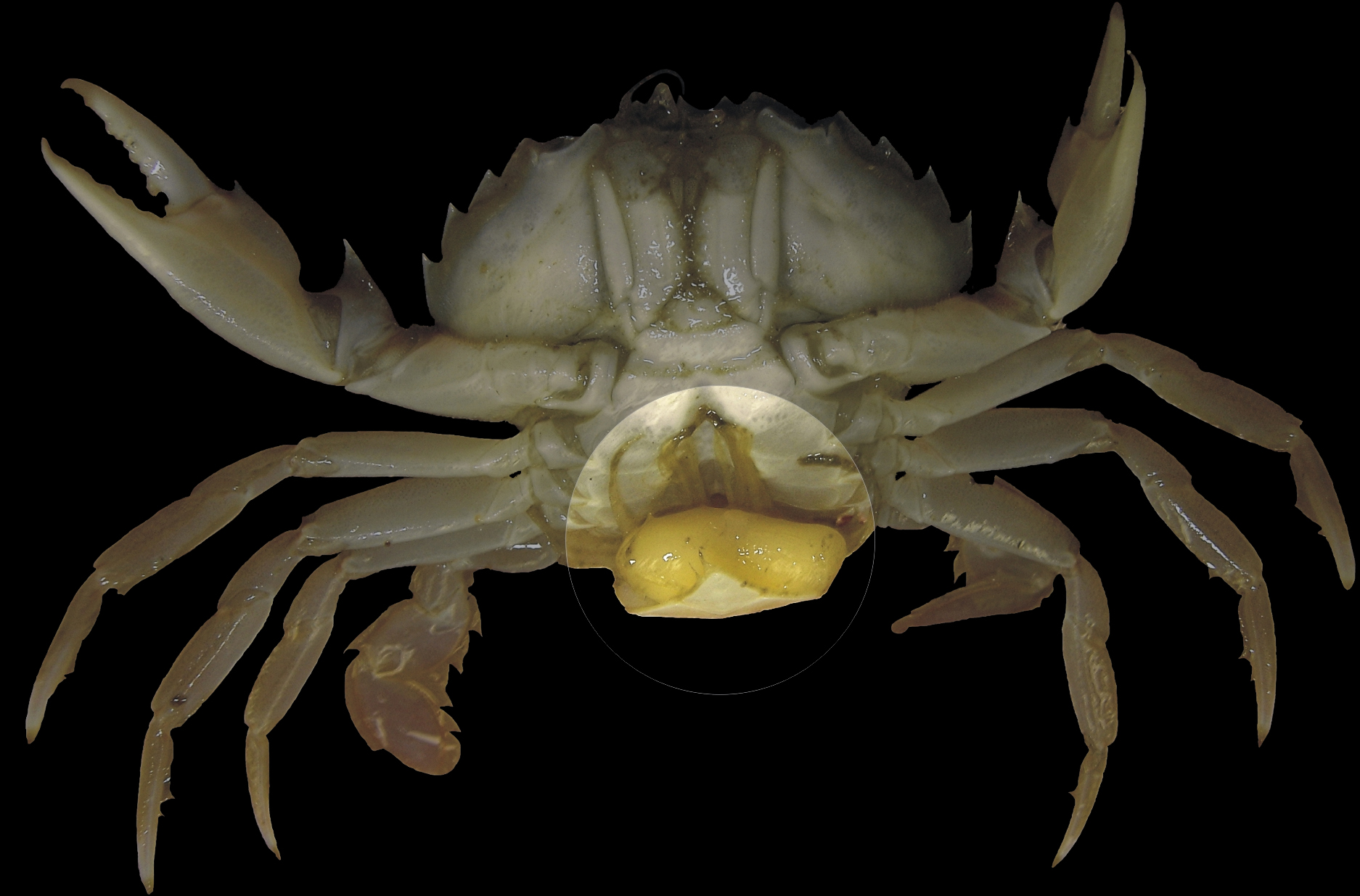- Rhizocephala
image_caption = The crab "Liocarcinus holsatus " parasitised by a rhizocephalan of the genus "Sacculina " showing the externa (circled)
image_width = 240px
regnum =Animal ia
phylum =Arthropod a
subphylum = Crustacea
classis =Maxillopoda
subclassis =Thecostraca
infraclassis = Cirripedia
superordo = Rhizocephala
superordo_authority = Müller, 1862
subdivision_ranks = Orders
subdivision =Kentrogonida Akentrogonida Rhizocephala are peculiar
barnacle s, parasitic on decapod crustaceans. Theirbauplan is uniquely reduced in an extreme adaptation to their peculiar lifestyle.Morphology
Rhizocephalans are related to the more typical barnacles. This is unrecognisable from the adult forms, but can be seen by comparison of the
larva e. As adults they lackappendage s, segmentation, and all internal organs exceptgonad s and the remains of thenervous system . Other than the minute naupliar stages, the only distinguishable portion of a rhizocephalan body is the externa or reproductive portion of adult females.The name "Rhizocephala" means "root-heads" and describes the adult female, which consists of a network of threads penetrating the body of the host that resemble the root of a plant penetrating the soil.
Life cycle
A nauplus larva transforms into a cypris larva after several moltings. A female cypris settles on a host and metamorphoses and injects its internal cell mass into host animal. It then ramifies, or grows in a similar manner to a root system, through the host, centering on the
digestive system . The female then protruds a sac-like externa on the abdomen of the host. The externa is immature until a male cypris injects its internal cells into female's "pouch" where cypris cells transform into sperm-producing cells. The mature female's externa produces two types of eggs: small ones, when fertilized, become female cyrpis and large ones that become male cypris. Because the externa is located in the same location as the host's egg sac would be, the host treats it as if it were its own egg sac, and never molts again (crustaceans do not molt until they release their eggs or young from thebrood pouch ). This behaviour even extends to male hosts, which would never have carried eggs or young in a brood pouch, but care for the externa in the same way as females.Classification
This article follows Martin and Davis in placing Rhizocephala as a superorder of
Cirripedia and in the following classification of rhizocephalans down to the level of families:ref|MartinSuperorder Rhizocephala Müller, 1862
* OrderKentrogonida Delage, 1884
**Lernaeodiscidae Boschma, 1928
**Peltogastridae Lilljeborg, 1860
**Sacculinidae Lilljeborg, 1860, such as "Sacculina "
* OrderAkentrogonida Häfele, 1911
**Chthamalophilidae Bocquet-Védrine, 1961
**Clistosaccidae Boschma, 1928
**Duplorbidae Høeg & Rybakov, 1992
**Mycetomorphidae Høeg & Rybakov, 1992
**Polysaccidae Lützen & Takahashi, 1996
**Thompsoniidae Høeg & Rybakov, 1992, such as "Thompsonia"References
# cite book|author = Joel W. Martin and George E. Davis|title = [http://www.nhm.org/research/publications/CrustaceaClassification.pdf An Updated Classification of the Recent Crustacea] |year = 2001|publisher = Natural History Museum of Los Angeles County
Wikimedia Foundation. 2010.

